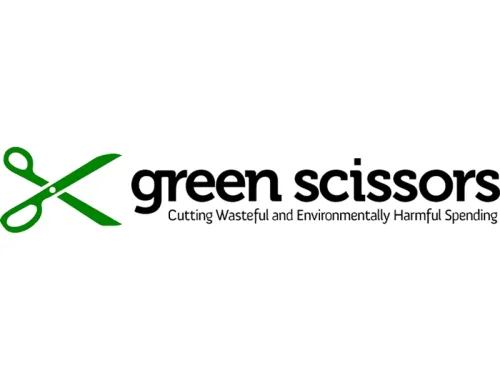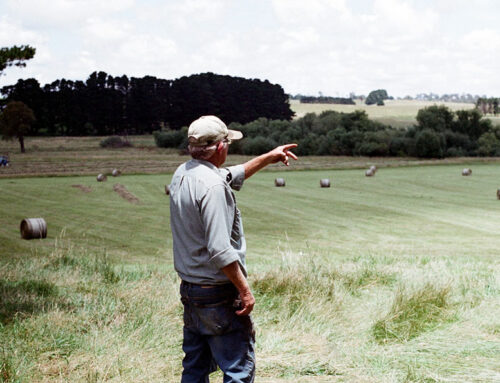View/Download this article in PDF format.
Taxpayer dollars must be managed in a manner that produces measurable outcomes and the best return on investment. The United States Department of Agriculture (USDA) has taken steps to more efficiently invest federal conservation dollars by developing regionally-focused landscape initiatives. The 2014 farm bill continued this trend toward better targeting and measuring conservation spending, but program consolidations and appropriations debates may pose obstacles. Policymakers should continue targeting conservation programs where investments are likely to have the greatest impact while increasing transparency of project selection and evaluation process to ensure taxpayers and farmers and ranchers are generating the most benefits possible from current conservation spending.
Scaling Conservation Programs
 |
| Image courtesy of NRCS |
Since the Great Depression, federal taxpayers have created a number of programs to aid farmers and ranchers in achieving public environmental goals. The bulk of the nearly $5 billion a year spent on conservation programs administered by USDA’s Natural Resources Conservation Service (NRCS) are targeted to individual farmers and ranchers seeking to solve a particular resource problem on their land. Recent farm bills, however, have produced an increase in initiatives designed to tackle national or regional natural resource concerns in a coordinated manner.
Starting in 2009, USDA began dedicating a portion of conservation funds toward achieving landscape-scale conservation resource goals.[1] Through its Landscape Conservation Initiatives (LCI), NRCS partners with state agriculture departments, universities, soil conservation districts, or other non-federal organizations, to target high-priority resource concerns in a specific geographic region. By coordinating funding in a specific geographic region the goal is to more quickly obtain measurable and noticeable progress toward important conservation goals. There are currently 15 LCIs primarily targeting improved water quality, water quantity, or wildlife habitat.[2]
LCI Spotlight – Mississippi River Basin Healthy Watershed Initiative
The largest water quality focused Landscape Conservation Initiative is the Mississippi River Basin Healthy Watershed Initiative (MRBI) which covers the 13 state region that constitutes the Mississippi River basin (excluding most of the upper reaches of the western tributaries). Within these states NRCS identifies priority sub-watersheds, often roughly the size of a few counties, in which specific projects will receive funding via a competitive application process.[3]
The goal of MRBI is to improve water quality and enhance wildlife habitat in the Mississippi River Basin while enhancing the economic viability of agricultural land. To do this NRCS partners with agricultural land owners to implement conservation practices that reduce soil erosion, increase the soils ability to hold nutrients and water, and maintain or increase wetlands and other wildlife habitat. An important attribute in MRBI is it is focused on measuring the impact of its projects, including even implementing edge-of-field monitoring devices to calculate reductions in soil erosion, and adjusting the program based on the results.[4]
An important detail is that MRBI, like other landscape initiatives, is a means of coordinating and directing work, but funding and implementation of projects is actually conducted through other conservation programs. Projects undertaken through the MRBI have come primarily through the Environmental Quality Incentives Program (EQIP), Wildlife Habitat Incentive Program (WHIP), and Conservation Stewardship Program (CSP). From 2010 through 2015 USDA reports the MRBI invested more than $210 million on approximately 5,500 conservation practice contracts across 124 projects.[5]
The Agricultural Act of 2014 (Farm Bill)
The 2014 farm bill made significant reforms to federal agricultural conservation programs. Numerous cuts and consolidations occurred within conservation, with the total number of conservation programs being reduced from 23 to 13. The programs constituting MRBI were impacted. WHIP was eliminated as a separate program and merged with EQIP, the Wetlands Reserve Program became a part of a broader Agricultural Easement Program (ACEP), and USDA’s Cooperative Conservation Partnership Initiative was deauthorized.
While CCPI was eliminated the farm bill continued to support addressing conservation on a regional basis through the new Regional Conservation Partnership Program (RCPP), a consolidation of five separate regionally focused programs. Under RCPP the USDA partners with non-federal groups to implement conservation programs in a number of Critical Conservation Areas. One such area is the Mississippi River Basin. RCPP is a separate initiative than MRBI or any of the other Landscape Initiatives.
Appropriations for Conservation
Farm bills set priorities for conservation programs, but the ability to achieve conservation program goals is dependent on the execution and funding of the programs. Annual appropriations and Executive Agency implementation are thus important determinants in the success or failure of conservation programs.
Annual appropriations have proved a challenge for efforts to target conservation funds at regional resource concerns as the programs they use are often targeted for spending cuts. Most conservation programs have an annual spending or acreage enrollment level authorized by the farm bill. Annual appropriations bills, however, may be written to provide a lower amount of spending or allow fewer acres into a program for that year. This process, known as Changes in Mandatory Programs (ChIMPs), enables policymakers to use the calculated savings to pay for other annual spending. Conservation programs that constitute the bulk of MRBI have received nearly $2 billion less than authorized due to this process in the last five years.[6]
MRBI, RCPP, and other initiatives could also be made more effective by increasing transparency of the programs. Annual reports on the programs state the number of contracts entered, dollars invested, and acres affected, but tend to lack any other details. Project partners and watersheds are identified, but the entire pool of applicants, including those rejected, are not disclosed preventing the public from confirming if USDA is in fact picking the most effective projects for funding. One of the greatest attributes of MRBI and other landscape initiatives is the focus on obtaining actual data to measure the impact of taxpayer funded projects and then adjusting the programs based on this information. Yet it is difficult to discern the quality of data USDA is collecting and how much the programs are being adjusted because access to raw, technical data collected by these programs is not currently available. Increased transparency in both the project selection and evaluation processes would help the public, lawmakers, and potential project partners better know how the programs are working.
Conclusion
Policymakers should support and encourage USDA’s movement toward targeting conservation programs where investments are likely to have the greatest impact while increasing transparency of agency decision making. The 2014 farm bill continues providing the opportunity for USDA to reorient federal programs from one-size-fits-all toward more responsiveness to local, real-world needs, while focusing on measurable outcomes. In a time of especially austere spending budgets, it is especially important that policymakers dispense limited taxpayer dollars where effectiveness can be documented and improved.
For more information contact Joshua Sewell at 202-546-8500 x116, or josh@taxpayer.net
Photo Credit: Doc Searls, via Flickr
References
[1]Sec. 2707 of The Food, Conservation and Energy Act of 2008 (P.L 110-246) established the Cooperative Conservation Partnership Initiative (CCPI) giving USDA the authority to implement landscape-level initiatives http://www.nrcs.usda.gov/wps/portal/nrcs/main/national/programs/financial/ccpi/
[2] http://www.nrcs.usda.gov/wps/portal/nrcs/main/national/programs/initiatives/
[3] http://www.nrcs.usda.gov/wps/portal/nrcs/detailfull/national/home/?cid=stelprdb1048200
[4] Perez, Michelle and Sara Walker. Improving Water Quality: A Review of the Mississippi River Basin Healthy Watersheds Initiative (MRBI) to Target U.S. Farm Conservation Funds. World Resources Institute, Jan. 2014. Accessed: http://www.wri.org/sites/default/files/mrbi.pdf
[5] Natural Resources Conservation Service. MRBI Partner Fact Sheet. Feb. 2015. Accessed: http://www.nrcs.usda.gov/wps/portal/nrcs/detailfull/national/home/?cid=stelprdb1048200
[6] Figures obtained from National Sustainable Agriculture Coalition. Agriculture Appropriations Chart Fiscal Year 2016; Agriculture Appropriations Chart Fiscal Year 2013. Accessed: http://sustainableagriculture.net/our-work/campaigns/annual-appropriations/













Get Social